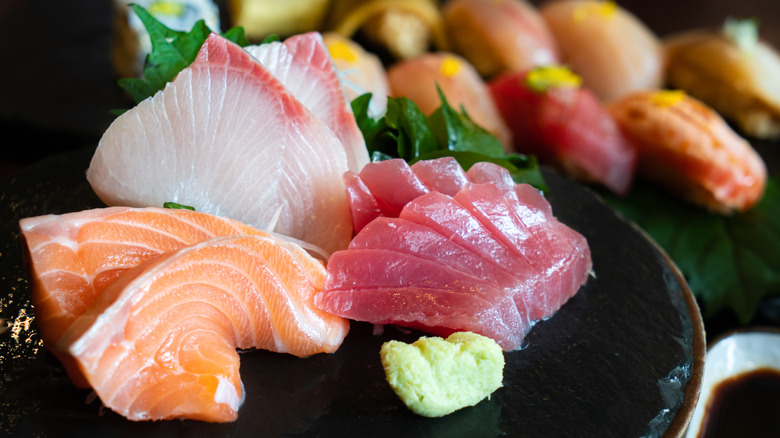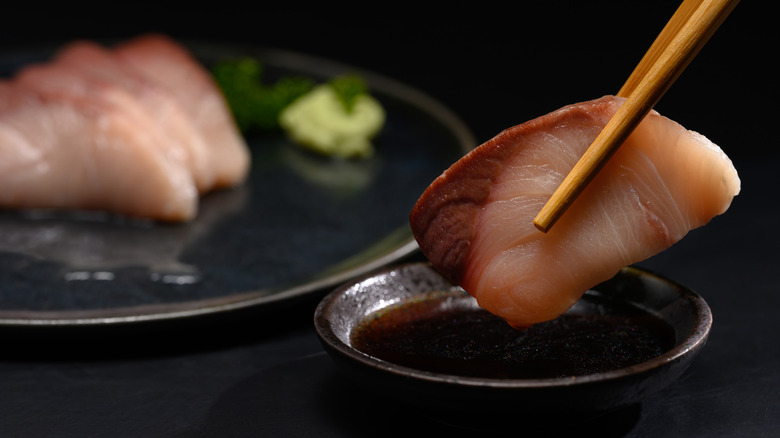The Best Type Of Fish To Use When Making Sashimi At Home
While sashimi is a popular option when dining out, the elegant raw Japanese dish can be a daunting prospect to prepare at home — but it needn't be. When you're serving a dish that centers around slices of uncooked fish, the type and quality of fish you choose is key. To find out what kind to buy, and how best to prepare it, Food Republic consulted Shingo Akikuni, the Michelin-calibered chef of omakase restaurant SHINGO in Florida.
Frozen hamachi, also known as Japanese yellowtail, is "probably the best value in terms of fish for sashimi," Akikuni told us. Not to be confused with yellowfin, which is one of the most popular types of tuna in Japanese cuisine, yellowtail goes by several different names in Japan. A type of jack, it's renowned for its tender texture and buttery taste, which makes it a great choice for making yellowtail sashimi on rice.
The most important factor is to make sure you buy fish that is from a reputable supplier. "Use good fish from a trusted source!" advised Akikuni. "Be careful about making sashimi or raw food from normal store-bought fish. Always understand the source and quality of the fish you are using." Choosing frozen hamachi over fresh is more convenient, too. "You can order it online, quickly defrost it, and slice it thin," the chef suggested.
Slice hamachi thinly and serve it simply
To prepare hamachi sashimi, ensure the frozen fish has been thoroughly thawed in the refrigerator overnight, rinsed, and patted dry. Gently remove the skin before slicing it, but don't make the pieces too large — it's "better to slice the fish a bit thin," chef Shingo Akikuni advised. A standard cut is about ¼ inch thick, but the thinner cut, known as usuzukuri, involves keeping the knife at a parallel angle to the fish rather than at 45 degrees.
Use long strokes of the knife to glide through the buttery flesh, cutting across the grain, and try to make each slice the same size if possible. A sharp knife makes things easier, and wiping it clean between each cut keeps the slices looking neat. You might find it helpful to cool your hands under cold running water first, so they're not too warm to handle the oily fish.
When plating the sashimi, just "serve it simply," Akikuni advised — which means "without drowning it in sauce." The chef's preferred choices are classic: "You can never go wrong with dashi soy sauce and fresh wasabi." Dashi soy combines salty soy sauce with a fish- and kelp-rich dashi broth to create an umami dip, while serving wasabi with sushi enhances the flavor of the fish and adds complex depth. It's good etiquette to eat sashimi with chopsticks — just dip it very lightly, and try to eat each piece in one or two bites.


